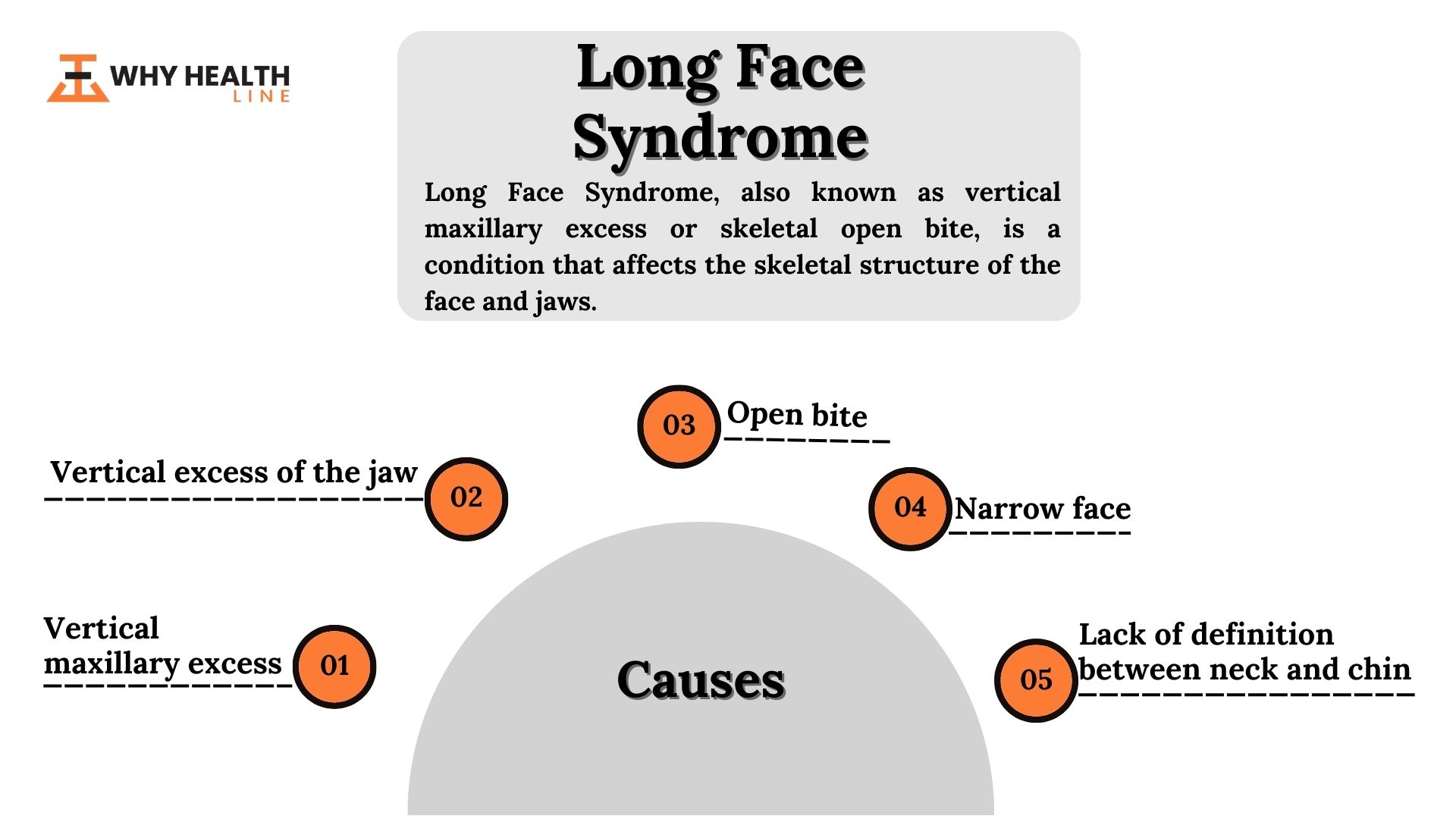Introduction:
Long face syndrome is a condition that results in a long, narrow face and is also known as facial hyper divergence. It is a medical condition that affects the actual structure of the skull.
However, not all people with narrow faces have this condition. Long face syndrome generally impacts our daily activities.
When a person has a long face syndrome, the lower third of their face, including the chin, gets abnormally longer. In this way, the upper gums of people with long face syndrome become more visible when they smile. In this condition, some people also have sagging and darkened skin under their eyes.
Many people with this condition are not even aware of it. However, untreated long-face syndrome for extended periods can cause problems as the lower third of the face is pulled away from the rest of the face. This greatly impacts the way people eat, breathe, and talk.
This condition usually leads to complications such as:
- Snore.
- Sleep apnea.
- Fatigue.
- Chin shift.
- Crowded teeth.
- Worn or broken teeth.
Causes of Long Face Syndrome:
Long Face Syndrome results in disproportionate facial features by which an elongated face impression is formed, though its dimensions are normal. This condition can be caused by one of the following factors in isolation or in combination:
- Vertical maxillary excess.
- Vertical excess of the jaw.
- Open bite.
- Narrow face.
- Lack of definition between neck and chin.
With time, breathing through the mouth due to nasal issues can also pull a person’s chin and face down. Mouth breathing also causes our tongue to push against our front teeth and can change our jaw’s shape.
Other factors can also lead to a long face syndrome that still needs some research but might also include genetics and thumb sucking.
Diagnosis:
Through the visual analysis of our faces, we can determine if we suffer from this problem. In this syndrome, the patient’s face usually gives the impression of being too long and in many cases, causes a gummy smile.
It can be challenging to determine whether a person naturally has a narrow face or it is due to long-face syndrome.
In children, healthcare providers might recommend long face syndrome if they notice that the child is breathing through his mouth or his chin is misaligned.
In adults, long face syndrome is often determined during sleep apnea or dental condition diagnosis. When a long face syndrome is suspected, the medical professional or orthodontist will start by examining the face.
They may take a series of X-rays in order to get exact measurements of facial proportions. In most cases, these measurements prove to be enough to diagnose this syndrome.
Treatments for Long Face Syndrome:
Treatment for long face syndrome generally depends on its diagnosis. This syndrome is easiest to treat when diagnosed at an early age. In some cases, the treatment is carried out to relieve nasal congestion.
For example, surgical removal of the adenoid allows patients suffering from this disorder to breathe easily through their noses.
Since a child’s face is still in a growing phase, breathing through their nose can entirely correct the situation, and their face will develop normally as they grow. Older children with this syndrome might benefit from a combination of different approaches.
They may have surgery to remove adenoids or wear braces or any other orthodontic aids. Such treatments can effectively prevent further damage.
Orthognathic Surgery:
Orthognathic surgery can correct face syndrome. It is another treatment used to treat this disorder. It is generally indicated in most cases to correct this malformation. This intervention might include isolated or combined strategies involving chin reduction, maxillary impaction, or anti-clockwise rotation of the occlusal plane.
With this surgery, the primary goal is not to “shorten” the face but to make the necessary bone movements to achieve a harmonization of the patient’s features.
Mentoplasty:
When the proportions of the mandible and maxilla are correct, and the vertical excess occurs due to the presence of a very long chin, then another treatment called mentoplasty is recommended.
After this surgery, the patient’s features are much more balanced and harmonious, and the gummy smile disappears.
This approach also corrects the abnormalities of bone development in the jaw, such as congenital agenesis or facial asymmetry of the jaw, a condition in which patients are born without a particular part of the jaw.
The signs of long-face syndrome usually go unnoticed or are not determined in the early stages. However, in some cases, this condition leads to major concerns for people living with this condition.
The earlier the long face syndrome is diagnosed, the easier it is to treat. Children might need a single surgery to correct a stuffy nose, but adults generally need years of braces and complex jaw surgeries in order to correct this condition.
FAQs
What Genetic Condition Has a Long Face?
Some researchers think that genetics might be the reason why some children who breathe through their mouths develop long face syndrome.



